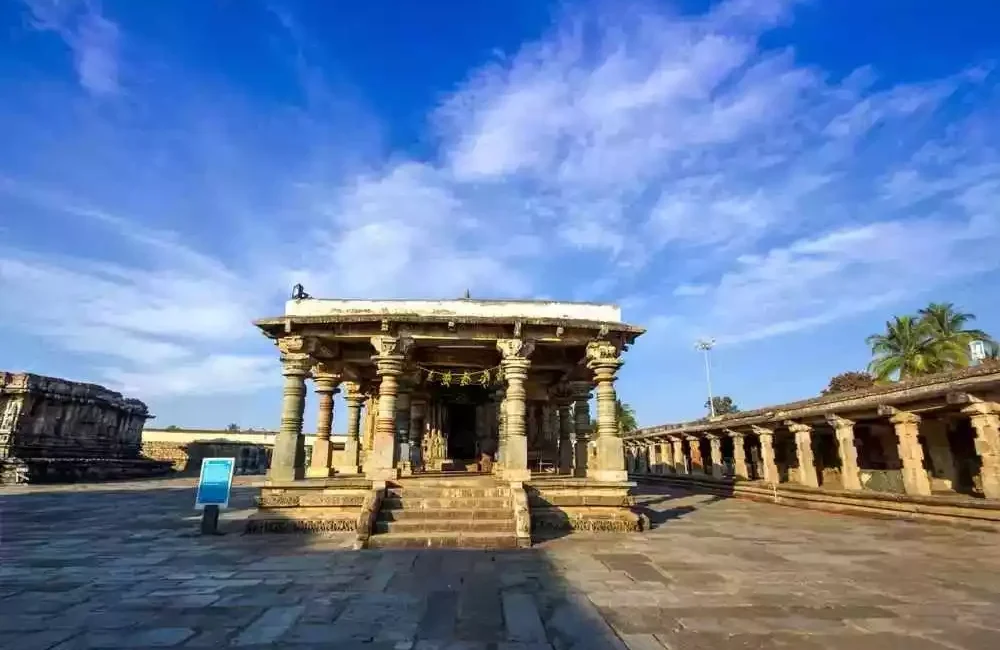Exploring the Diverse and Enchanting District of Hassan
Introduction
Located in the heart of Karnataka, Hassan district is a region rich in cultural heritage, natural beauty, and historical significance. This district, named after the Goddess Haasanamba, offers a unique blend of ancient temples, lush landscapes, and vibrant communities. Join us as we delve into the intricate tapestry of Hassan's demography, culture, geography, topography, cuisines, history, literary contributions, and administrative framework.
Demography
Hassan district is a melting pot of diverse communities, including Hindus, Muslims, Christians, and Jains. The population is a mix of various ethnic groups, with a significant representation of the Vokkaliga, Lingayat, and Kuruba communities. According to the latest census, the district has a population of approximately 1.77 million people. The literacy rate is commendable, with a significant portion of the population having access to education and employment opportunities.
Culture
The cultural landscape of Hassan is a vibrant mosaic of traditions, festivals, and art forms. The district is renowned for its classical music, dance, and drama. Folk dances like Dollu Kunitha and Veeragase are integral to local celebrations and are performed with great fervor during festivals like Ugadi, Dussehra, and Diwali. The people of Hassan also take pride in their traditional crafts, including silk weaving, pottery, and wood carving, which reflect their artistic heritage.
Geography and Topography
Location and Landscape
Hassan district is situated in the Malnad and Maidan regions of Karnataka. The district spans an area of 6,814 square kilometers, with a varied topography that includes rolling hills, fertile plains, and dense forests. The Western Ghats, a UNESCO World Heritage Site, partially extend into the district, offering a haven for biodiversity and stunning landscapes.
Rivers and Water Bodies
The district is crisscrossed by several rivers, including the Hemavati, Yagachi, and Cauvery. These rivers are lifelines for the region's agriculture and are also crucial for drinking water and irrigation purposes. The Yagachi Dam, built on the Yagachi River, is a significant source of water for the district and a popular spot for tourism and recreation.
Topography and Natural Attractions
Hassan's topography is characterized by its diverse landforms, ranging from the rugged terrain of the Western Ghats to the gentle slopes of the Deccan Plateau. The district is home to several natural attractions, including the Bisle Ghat, known for its panoramic views and rich biodiversity. The Sakleshpur region, with its lush greenery and tea plantations, is another highlight, attracting nature lovers and adventure enthusiasts.
Mermaid Diagram of Hassan's Topography
Cuisines
The culinary heritage of Hassan is a delightful blend of flavors and traditions. The local cuisine is primarily based on rice, lentils, and vegetables, with a generous use of spices and coconut. Some of the popular dishes include:
- Bisi Bele Bath: A spicy rice and lentil dish cooked with vegetables and tamarind.
- Ragi Mudde: A nutritious staple made from finger millet flour, typically served with spicy curries.
- Mysore Pak: A famous sweet made from gram flour, ghee, and sugar, originating from the nearby Mysore region.
The district also boasts a variety of chutneys, pickles, and desserts that are unique to the region, reflecting the local agricultural produce and culinary creativity.
History
Hassan's history is a rich tapestry of dynasties, empires, and cultural evolution. The district has been a significant center of power and culture for several centuries.
Ancient and Medieval Periods
The history of Hassan dates back to ancient times, with evidence of human habitation from the Neolithic period. The district was ruled by several dynasties, including the Kadambas, Gangas, Hoysalas, and Vijayanagara Empire. The Hoysalas, in particular, left an indelible mark on the region, with their magnificent temples and architectural marvels, such as the Chennakesava Temple in Belur and the Hoysaleswara Temple in Halebidu.
Colonial Era and Independence
During the British colonial period, Hassan was part of the Mysore Princely State. The district played a significant role in the freedom movement, with many local leaders and freedom fighters contributing to the struggle for independence. Post-independence, Hassan has continued to evolve, balancing tradition with modernity, and making significant strides in education, infrastructure, and economic development.
Poets and Authors
Hassan has been a nurturing ground for literary talent, producing several renowned poets, writers, and scholars who have made significant contributions to Kannada literature and beyond.
Prominent Literary Figures
- Rastrakavi Kuvempu: One of the most celebrated poets of Karnataka, Kuvempu's works are considered masterpieces of Kannada literature. He was born in Kuppalli, a village in Hassan district.
- Dr. G. S. Shivarudrappa: A notable poet and scholar, Dr. Shivarudrappa's literary works have garnered immense respect and accolades.
These literary figures have enriched the cultural and intellectual heritage of Hassan, leaving behind a legacy that continues to inspire and influence new generations of writers and poets.
Administration
Hassan district's administrative framework is designed to ensure effective governance and development across its various regions.
Administrative Structure
The district is divided into eight taluks: Alur, Arkalgud, Arsikere, Belur, Channarayapatna, Hassan, Holenarasipura, and Sakleshpur. Each taluk is further subdivided into hoblis and villages, facilitating decentralized governance and efficient administration.
Governance and Development
The district administration, headed by the Deputy Commissioner, is responsible for implementing government policies, overseeing development projects, and maintaining law and order. Various government departments work in tandem to address the needs of the population, including healthcare, education, agriculture, and infrastructure development.
Conclusion
Hassan district stands as a testament to Karnataka's rich cultural heritage, natural beauty, and historical significance. From its diverse demography and vibrant cultural traditions to its breathtaking landscapes and culinary delights, Hassan offers a wealth of experiences for residents and visitors alike. As the district continues to progress and modernize, it remains deeply rooted in its traditions, forging a path towards a future that honors its illustrious past.
